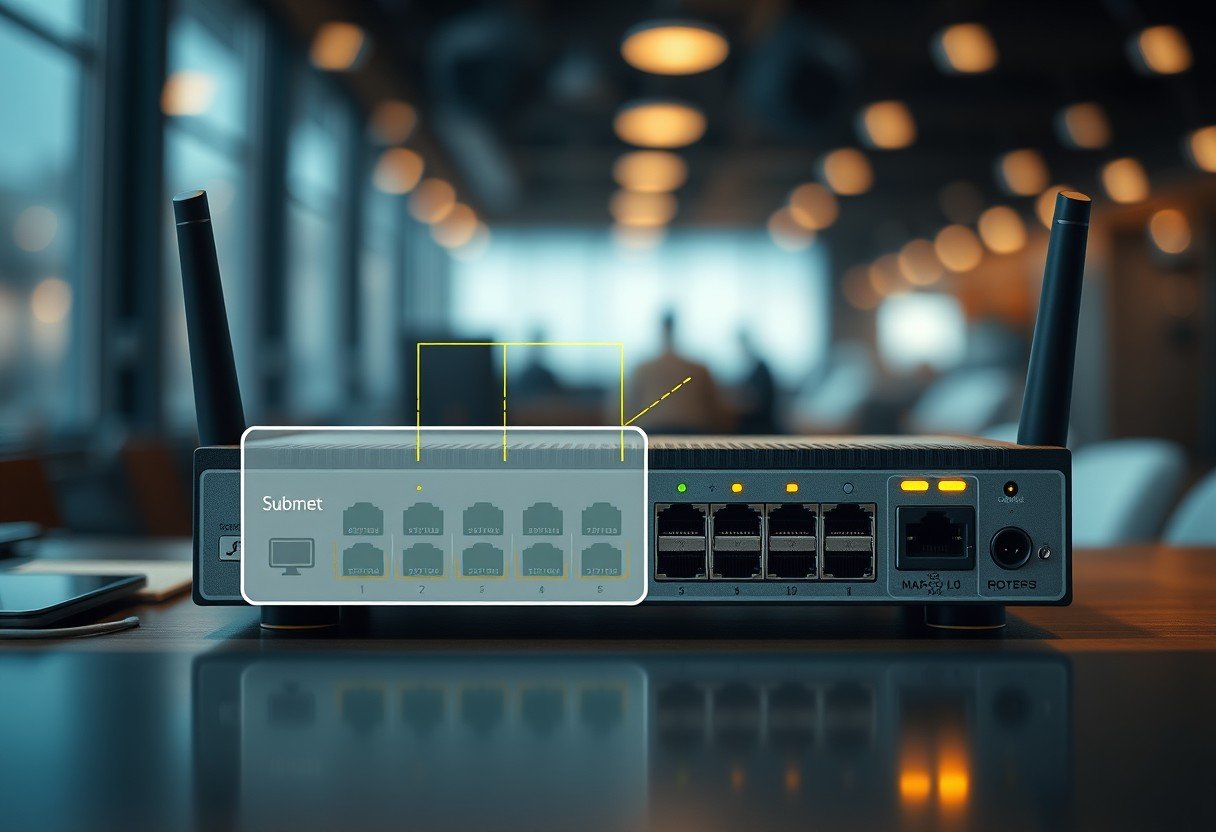Routers move data on the internet and in your home by reading the destination IP address, finding the network portion with a subnet mask, and picking the next hop from a routing table. This happens at every hop, for every packet, so traffic reaches the right network and host. Knowing what part of the address is used and why it matters will help you plan, fix, and speed up your network.
What Part Of An IP Address Do Routers Use?
Routers read the destination IP address in every packet header. They do not care about the sender when choosing a path. The key job is to decide where to forward the packet next.
Routers forward packets using the network portion of the destination IP address, not the host portion. The goal is to get the packet to the correct network, where the final device can be found.
At each hop, the router compares the destination address to entries in its routing table. The match that covers the most bits of the network portion is chosen.
This process is called longest prefix match. It makes forwarding both fast and accurate, even when many networks overlap or aggregate.
How Subnet Masks And CIDR Define The Network Portion
A subnet mask tells which bits in an IP address are the network and which are the host. CIDR uses prefix length like /24 to show how many leading bits belong to the network.
- The router performs a bitwise AND of the IP address with the subnet mask.
- The result is the network ID used to search the routing table.
- The entry with the longest matching prefix decides the next hop.
With IPv4, a 32 bit address can be split many ways, such as /8, /16, or /24. With IPv6, the address is 128 bits, and /64 is common for end networks. The subnet mask or CIDR prefix is what turns a raw IP address into a routable network ID.
IPv4 offers about 4.29 billion unique addresses, which led to address reuse and NAT. IPv6 has a far larger space and removes the pressure on address planning.
Routing Tables And Longest Prefix Match
A routing table lists destination prefixes, next hops, and interfaces. It may also store metrics and route sources like static, OSPF, EIGRP, or BGP.
When several routes match a destination, the router selects the route with the longest prefix length. For example, a route for 10.1.0.0/16 will be used, but a more specific 10.1.2.0/24 will beat it.
The default route 0.0.0.0/0 or ::/0 catches traffic that does not match any specific entry. This keeps routing simple for unknown or external networks.
| Field | What It Means | Example |
|---|---|---|
| Destination Prefix | Network covered by the route | 192.168.10.0/24 |
| Next Hop | Router to send the packet to | 192.168.1.1 |
| Outgoing Interface | Local interface used to forward | GigabitEthernet0/1 |
| Metric | Cost used to compare routes | 10 |
| Route Source | How the route was learned | OSPF |
From Next Hop To Final Delivery On The Local Network
After picking the next hop, the router must deliver the packet to the next device on a local link. For IPv4 it uses ARP to map the next hop IP to a MAC address. For IPv6 it uses Neighbor Discovery.
- Resolve the next hop IP to a link address with ARP or Neighbor Discovery.
- Encapsulate the packet in a frame for the correct interface and VLAN.
- Send the frame toward the next hop so the journey can continue.
Only the last router needs to care about the host portion of the address, because that is where the final device lives. All earlier hops focus on the network portion only.
This design keeps core routing fast and simple. Access switches and the final router handle the local delivery details.
IPv4 And IPv6 Differences That Matter For Routing
IPv4 uses 32 bits and often relies on NAT in many networks. IPv6 uses 128 bits, supports native end to end addressing, and improves auto configuration.
Header formats differ, but the core idea is the same. The router still uses the destination IP and longest prefix match to pick a path.
| Item | IPv4 | IPv6 |
|---|---|---|
| Address Length | 32 bits | 128 bits |
| Example Address | 192.0.2.25 | 2001:db8::25 |
| Subnet Notation | /24 like 192.0.2.0/24 | /64 like 2001:db8::/64 |
| Link Resolution | ARP | Neighbor Discovery |
Common Problems And How To Troubleshoot Them
Wrong subnet masks break the network portion and send packets the wrong way. A missing default route can stop internet access for an entire site.
When a packet is dropped, check the routing table, the prefix lengths, and the next hop reachability first. These checks solve a large share of real world cases.
Use ping and traceroute to see where the path stops. Look for asymmetric paths that might be blocked by filters.
On the last hop, verify ARP or Neighbor cache entries. Clear stale entries if the layer two address has changed.
Best Practices For Clear And Efficient Packet Forwarding
Plan address space with clear aggregates so routing tables stay small. Summarize routes between layers of the network to reduce churn.
Prefer dynamic routing protocols for larger networks. Tune metrics so primary and backup paths behave as expected during failures.
Document prefixes, masks, and next hops for every network, and keep that record updated as the network grows. Good records speed up every fix and change window.
FAQ
Which part of the network layer address does a router use to forward packets?
A router uses the destination network portion of the IP address to choose the next hop. The longest prefix match in the routing table decides the exact route.
How does a router find the network portion of an IP address?
It applies the subnet mask or CIDR prefix to the destination IP with a bitwise AND. That result is the network ID used for table lookup.
What is longest prefix match and why is it important?
It means the route with the most matching leading bits wins. This keeps forwarding precise when both general and specific routes exist.
Do routers need the host portion to forward traffic?
No, not until the packet reaches the final network. Upstream routers care only about the destination network so they can move the packet closer.
What happens if there is no matching route?
If no specific route exists, the router uses the default route if present. If no default exists, the packet is dropped and an unreachable message may be sent.
How do IPv4 and IPv6 affect forwarding decisions?
Both use the same forwarding idea based on destination and prefix length. Differences are in address size and link resolution, not in the core routing logic.









Leave a Comment